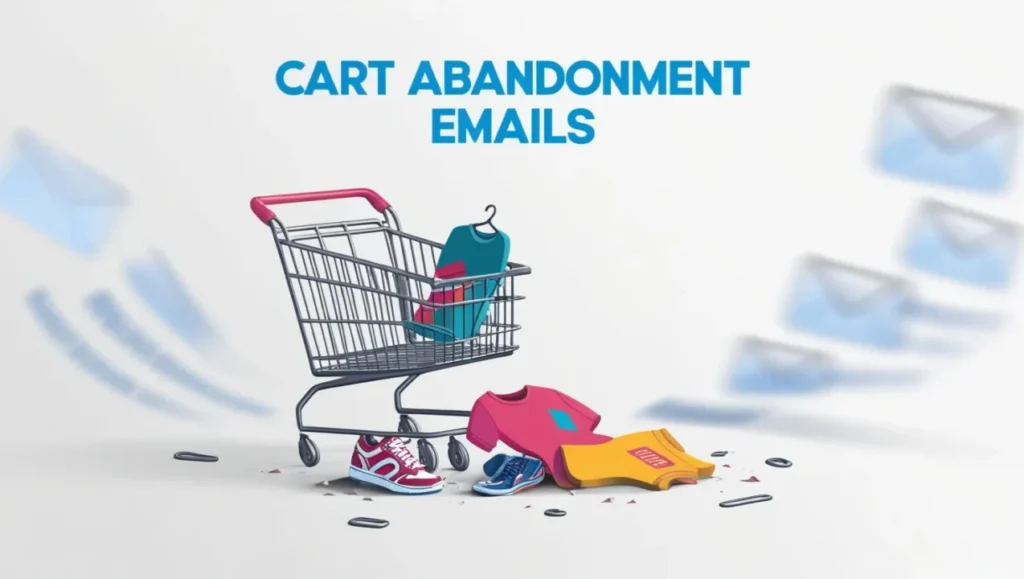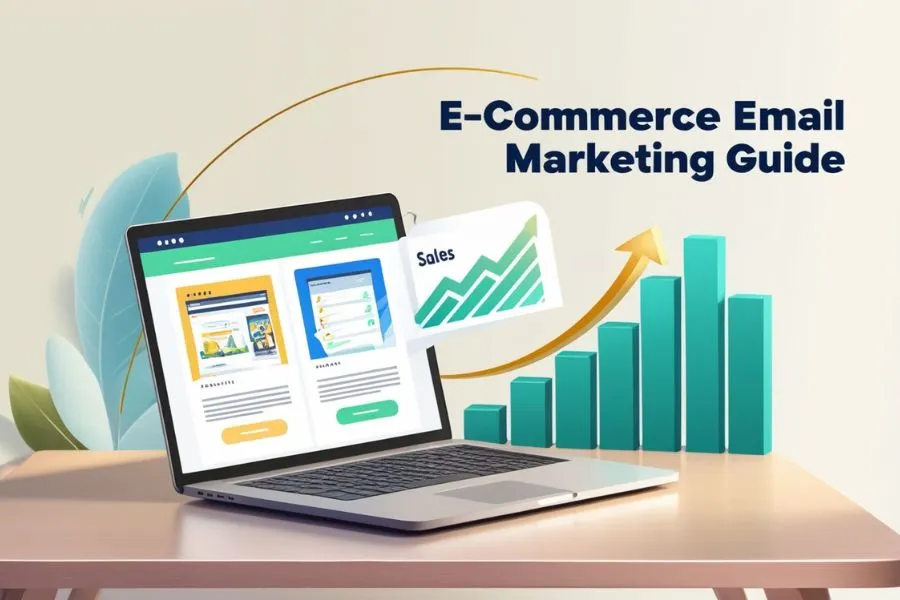Table of Contents
Introduction
Ever wondered how some businesses consistently increase their online sales while others struggle? The secret often lies in E-commerce Email Marketing, a powerful strategy that keeps customers engaged, informed, and buying. From cart abandonment emails that gently nudge customers to return, to seasonal promotions that spark excitement, email marketing is your ultimate tool.
In this blog, we’ll break down everything you need to know, with actionable tips and examples to supercharge your e-commerce business.
What is E-commerce Email Marketing?
At its core, e-commerce email marketing is the practice of using email to promote products, engage with customers, and drive sales for your online store. Think of it as the digital handshake that builds relationships with your audience while subtly nudging them toward purchase decisions.
Why Email Marketing is Essential
Why should you care about email marketing? Here’s the deal: emails have a median ROI of 122%, which is four times higher than other marketing channels. Plus, they create a direct line of communication with your customers.
Example:
Imagine you’re a small business owner selling products related to handmade jewelry. You can use below by sending targeted email campaigns:
- Promote new products: Announce your latest collection with exclusive discounts for your email subscribers.
- Share personalized offers: Send birthday coupons or special deals based on past purchases.
- Educate your audience: Provide tips on wearing jewelry and styling.
- Collect customer feedback: Conduct surveys to gather insights and improve your products.
Cart Abandonment Emails

Cart abandonment is a silent sales killer. Imagine how a shopper fills a cart at your store. That’s where cart abandonment emails come in!
Tips for Effective Cart Abandonment Emails:
- Timing is Key: Send the first email within 1-2 hours.
- Add Incentives: Offer free shipping.
- Keep it Simple: Highlight the items left in the cart with a direct call-to-action (CTA).
Example:
Subject Line: “Forgot something? Your cart misses you!”
Include a visually appealing reminder with clickable links to finalize the purchase.
Product Recommendations
Want to delight your customers while boosting sales? Send emails of product recommendation emails based on their browsing history and past purchases.
Why It Works
These emails feel personal like a friend giving you tailored shopping advice. They help customers discover new products they’ll love, driving repeat purchases.
Upselling Emails
Upselling is like offering fries with a burger, it complements the main purchase.
How to Create Upselling Emails
- Bundle Deals: Suggest complementary products.
- Highlight Benefits: Explain how the upgrade enhances value.
- Time-Limited Offers: Use urgency to encourage action.
Example:
“Upgrade your purchase with these exclusive add-ons! Offer valid for 24 hours.”
Transactional Emails
Transactional emails might seem boring, but they’re goldmines for engagement. These include 1. order confirmations, 2. shipping updates, & 3. payment receipts.
Make Them Stand Out
- Add upselling suggestions (e.g., “Add this to your order before it ships!”)
- Keep the tone friendly and professional.
Seasonal Promotions
Seasonal campaigns are perfect for capitalizing on holiday buzz. Think Black Friday, Christmas, or even niche occasions like National Coffee Day.
Creating Buzz with Seasonal Emails
- Use festive designs and catchy subject lines.
- Include countdown timers to build urgency.
- Offer exclusive, limited-time discounts.
Building a Strong Email List
Email list help effective email marketing basics. Prioritize quality over quantity by:
- Employing Opt-in Forms: Ensure subscribers actively choose to receive your emails.
- Offering Irresistible Lead Magnets: Provide valuable incentives like exclusive discounts or insightful guides to entice sign-ups.
Example Lead Magnet:
For a Fitness Blog:
- Lead Magnet: “Home Workout Guide: Without Equipment, Maximum Results”
- Description: A downloadable PDF providing a comprehensive 30-day workout plan designed for home workouts, perfect for busy individuals seeking to stay fit.
Best Practices for E-commerce Emails
- Keep It Short: Respect your readers’ time.
- Use Clear CTAs: Ensure every email has a purpose.
- Test and Optimize: Experiment with subject lines, layouts, and timings.
Tools for E-commerce Email Marketing

Streamline your email marketing efforts and boost customer engagement with industry-leading platforms like:
- Mailchimp: A user-friendly tool perfect for small businesses, offering customizable templates, automation, and analytics to enhance your campaigns.
- Klaviyo: Designed for e-commerce, Klaviyo provides advanced segmentation, personalized messaging, and robust automation features to drive sales.
- Sendinblue: An all-in-one marketing platform that combines email marketing, SMS, and CRM capabilities, empowering you to deliver targeted and effective campaigns.
Real-Life Examples of Success
Big brands like Amazon and ASOS excel in e-commerce email marketing. For instance, Amazon’s product recommendation emails account for a significant chunk of their sales.
Conclusion
Email marketing is the lifeline of e-commerce success. Whether it’s reeling back lost customers with cart abandonment emails or building excitement with seasonal promotions, these strategies can transform your business. Start experimenting, keep optimizing, and watch your sales soar.
FAQs
1. How often should I send e-commerce emails?
Aim for 1-2 emails per week, depending on your audience’s preferences.
2. What’s the best time to send emails?
Midweek mornings (Tuesday or Wednesday around 10 a.m.) often yield the best results.
3. How can I reduce cart abandonment?
Send timely reminders, offer incentives, and simplify the checkout process.
4. Can I automate my email campaigns?
Yes! Tools like Mailchimp and Klaviyo make automation easy and efficient.
5. What’s the ROI of e-commerce email marketing?
On average, email marketing delivers an ROI of $42 for every $1 spent.

